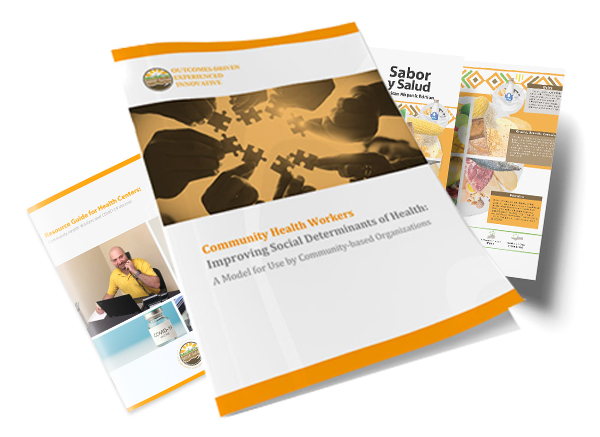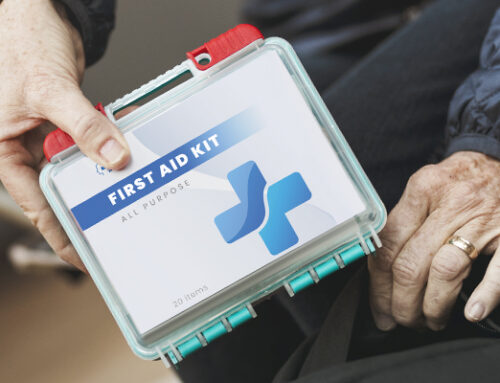How Community Health Workers can be a Cost-Effective Strategy to Reducing Emergency Department Use
Published February 2022 | Back to all news and updates.
Frequent use of Emergency Departments (ED) by super-utilizers – account for between 21% to 28% of all ED visits.1 Super-Utilizers may lean on emergency departments due to lack of health insurance, financial limitations, or lack of knowledge of available healthcare options. As health care systems work to reduce the use of emergency departments for non-emergencies, one strategy that has proven to be effective is the integration of Community Health Workers (CHWs).
CHWs are trusted members of their communities who empower their peers through education and connections to health and social resources. Their understanding of the culture, the language, and the network of resources available within their community allow them to be effective at addressing emerging health challenges in any geographic location with individuals of any cultural make-up and across various age groups. The inclusion of CHWs in health care has resulted in a decrease in costs for organizations and government programs while alleviating the rates of service utilization. This is why they are perfectly positioned to work with Super-Utilizers to reduce their disproportionately high use of ED services.
Why are Super-Utilizers important?
On average super-utilizers cost the healthcare system $8.3 billion annually.2 The high cost of ED services, compounded with limited ED resources3, motivates both policymakers and providers to find solutions to limit ED use to acute emergencies.
Super-utilizers often go to the ED for treatments to address4:
- Abdominal pain
- Back pain
- Chronic conditions
- Urinary tract infection
- Non-specific chest pain
- Superficial injury
- Headaches
Resources consumed by super-utilizers include space, such as hospital beds, time, such as physician consultations and testing, as well as financial resources, such as the cost of their visit.
A study conducted in 2020 found that the average cost of a “long-term” super-utilizer was $2,807 per patient visit.4 If the patient had a heart-related complaint the average cost increased to $5,609 per patient per visit.5
How CHWs Can Help
CHWs can play a role in reducing ED use by super-utilizers, saving vital resources for those who need them by providing services that address key issues impacting overuse of the ED such as:
- Addressing Social Determinants of Health needs
- Eliminating barriers to healthcare access
- Providing knowledge on available healthcare providers
- Acting as a liaison between primary care provider and patient
- Providing case management for patients with chronic diseases
CHWs and the Healthcare System
There is evidence to suggest that CHW-led program interventions targeting overuse of the ED and other emergency medical services can be beneficial to the patient, the institutions that serve them, and society/the general public. For example, a program focusing on patient education and outreach on community health services reduced unnecessary ED use up to 80%.6 Another study found that providing intensive case management decreased EMS use by 32%.4 The benefits of CHW interventions impact super-utilizers, the ED, and the general public who often foot the bill for uninsured patients.
Research suggests that there are potential opportunities for CHWs to support and empower super-utilizers by:
- Providing patient education and outreach
- Establishing a medical home for primary care
- Screening for prospective super-utilizers
- Patient navigation/ case management7
The Baltimore Maryland EMS Transport pilot project highlights the savings that CHW-led interventions can provide.5 While this project was small in scale, targeting only 10 patients over the course of 3 months, it demonstrates the potential contributions of CHWs to decreasing the overuse of ED services by super-utilizers.
Example of how CHWs can mitigate costs of super-utilizers through CHW services Baltimore Maryland EMS Transport Pilot Project
Healthcare Savings
$14, 461
Fire Department Savings
$6,311
Decreased EMS use by
32%
As a nation with limited ED resources, it’s imperative that we begin to address the root causes of Super-Utilizers. CHWs can serve to help by identifying them within the healthcare system and by linking them with non-emergent healthcare providers.
Ready to explore the integration of CHWs into your program? We can help!
- Personalized Care Plans: Are They Effective in Decreasing ED Visits and Health Care Expenditure Among Adult Super-Utilizers? https://pubmed.ncbi.nlm.nih.gov/31685338/#:~:text=Problem%3A%20Super%2Dutilizers%20comprise%204.5,readiness%2C%20and%20reduced%20staff%20morale.
- “Preventable ED Use Costs $8.3 Billion Annually: Analysis.” Home, 2019, www.hfma.org/topics/news/2019/02/63247.html.
- According to Nancy Foster with the American Hospital Association, the United States has fewer hospitals and hospital beds per capita than almost all other industrial nations, including Italy, France and the U.K.https://www.npr.org/2020/10/31/929914986/why-the-u-s-has-a-problem-with-hospital-capacity
- “Target Long-Term Emergency Room Frequent Users to Curb Visits and Cut Costs.” Www.healthleadersmedia.com, www.healthleadersmedia.com/clinical-care/target-long-term-emergency-room-frequent-users-curb-visits-and-cut-costs. Accessed 1 Oct. 2021.
- “Operation care: a pilot case management intervention for frequent emergency medical system users” https://www.cpc.mednet.ucla.edu/uploads/mih/library/57%20pilot%20case%20management%20intervention%20for%20frequent%20emergency%20medical%20system%20users.pdf
According to Nancy Foster with the American Hospital Association, the United States has fewer hospitals and hospital beds per capita than almost all other industrial nations, including Italy, France and the U.K. https://www.npr.org/2020/10/31/929914986/why-the-u-s-has-a-problem-with-hospital-capacity
- “Non-emergency department interventions to reduce ED utilization: a systematic review.” Academic emergency medicine: official journal of the Society for Academic Emergency Medicine vol. 20,10 (2013): 969-85. doi:10.1111/acem.12219
- Research by Kwan et al found a decrease in ED use among Super-utilizers through an intensive case management intervention with CHWs. CHWs visited the patients in their homes, conducted assessments, created service plans and objectives set by the patients. Objectives primarily included connecting clients to primary care and improving clients’ material circumstances. (Kwan, Bethany M et al. “Community Health Workers: Addressing Client Objectives Among Frequent Emergency Department Users.” Journal of public health management and practice: JPHMP vol. 24,2 (2018): 146-154. doi:10.1097/PHH.0000000000000540)
Blog Topics

This comparative analysis includes the presence of minority and special populations and the types of chronic diseases that are treated to understand the role community composition plays in determining the presence of CHWs within Health Centers.







